Even when you water and fertilize properly and keep your bonsai in a location appropriate for their health, problems can arise.
Insects, disease, poor drainage or short periods of neglect can stress bonsai and cause trees to weaken. Working on stressed trees, whether wiring or cutting back, can cause further stress.
This may sound funny, but the best approach to dealing with sick bonsai is to prevent them from becoming sick in the first place. Even though most maladies can be successfully addressed, problems in one tree can spread to others in the case of insects or fungus, and signs of stress due to poor soil or neglect are likely to affect more than one tree at a time.
The very best way to monitor tree health is simple – look closely at your trees as often as possible.
This is simple in theory but can be difficult to practice as days come and go when we’re too busy to take the time to see what’s going on under leaves or just beneath the surface of the soil. I’m constantly surprised how quickly tree health can change and am reminded monthly that one cannot spend too much time on the lookout for signs of trouble.
Checking the foliage
Fortunately, no special technical skills are required for this. Simply inspecting foliage on a regular basis – at the tree’s exterior and interior and from above and below – is one of the best approaches to maintain bonsai health. Even if you don’t know what you’re looking for, you’ll be better equipped to notice change if you look at your trees closely and regularly.
When you do notice a change in foliar appearance, you can begin the process of narrowing down the problem. For instance, is the problem on the surface of the foliage (this could be due to infestation or fungus) or is the foliage itself discolored or damaged (this could be anything from root insects to root fungus to nutrient imbalance to wilting)?
Spots indicate damage from fungus on coast live oak
Signs of fungus on trident maple foliage
Once you’ve identified the problem, you can confer with friends, local nurseries, bonsai clubs or bonsai professionals about the best course of action. If you take photos of the affected areas, you can share the pics online on a forum and get help there too.
Checking the soil
Checking the soil periodically can help you determine if your watering is effectively wetting the soil. On many occasions I’ve watered bonsai and seen the surface of the soil turn dark only to dig down 1/4” and find that the rootball is completely dry.
In these cases, I can try several remedies. I can water longer or multiple times to see if that helps. I can poke into the rootball with a chopstick to make passages for the water to get into the rootball. I can replace the top inch of topsoil with fresh soil so water can enter the soil and soak in from that point downward, and I can start dunking the tree in a tub of water on a regular basis and leave it until the water penetrates the rootball.
I’ve also had the reverse happen in my garden. I’ll see that the surface of the soil is dry so I’ll water. One day later the surface of the soil will be dry again, but instead of watering, I’ll dig down to where the roots are and find that the rootball is wet.
Keeping bonsai too wet can be a serious problem. Whereas letting a tree dry out can cause damage quickly, keeping trees too wet can weaken them over time. When I find a tree that doesn’t dry out quickly, I’ll make a habit of checking the soil every day when I’m watering and I’ll avoid watering it until the soil begins to dry out a bit.
Extended periods of rain can be problematic too. If I think a tree is staying too wet, I can either move it under cover or I can place a board under one end of the pot to reduce the amount of water the soil holds.
A 2 x 4 under one end of the pot reduces the soil’s ability to hold water
Some of the best – and worst – things that can happen to bonsai happen out of sight. If you see fuzzy white, yellow, or tan material when you repot, you may have mycorrhiza – a good thing – or root aphids – a bad thing.
Mycorrhiza refers to the symbiotic relationship between roots and beneficial fungi that provide nutrients to the tree. Mycorrhiza may appear white or tan in color. Just a little might be visible or it can fill the pot.
Lots of mycorrhiza
Root aphids are insects that feed on sap in the roots. They can look similar to mycorrhiza (learn more about root aphids here).
There is a near limitless number of threats and conditions that can adversely affect bonsai health. Experience can provide opportunities to learn some of the most common ones. In the meantime, here are some tips and resources related to identifying situations that need attention.
- If you have a number of bonsai of the same variety, one of the best ways to spot trouble is to compare the foliage color and quality between specimens. If most of your pines are green, for example, and one is yellow, it’s time to investigate further.
The pine with yellow foliage needs attention
- Bonsai may need water even when it’s raining. If the rain is gentle or if a tree has a thick canopy, the roots may not be getting the water they need. Dig into the soil to where the roots are and water if the rootball is dry.
Dry area under dense canopy on rainy day
- Give bonsai plenty of space on the bench and remove old foliage as it accumulates. Keeping trees too close together prevents foliage from getting the air and light it needs and it provides insects with good hiding places.
These junipers – healthy at a glance – are kept too close together
Upon closer inspection, small white dots become visible – signs of juniper scale
- Vacations can spell trouble for bonsai as even a few days without water can damage or kill trees in summer. If possible, find someone in the bonsai community to help with the watering while you’re away as they’ll be familiar with the care your trees need.
- For those unfamiliar with the pests that commonly attack bonsai, you can find previous posts on the topic here.
Next up: Assessing bonsai vigor
Subscribe to Bonsai Tonight
New Posts Delivered Every Tuesday and Friday
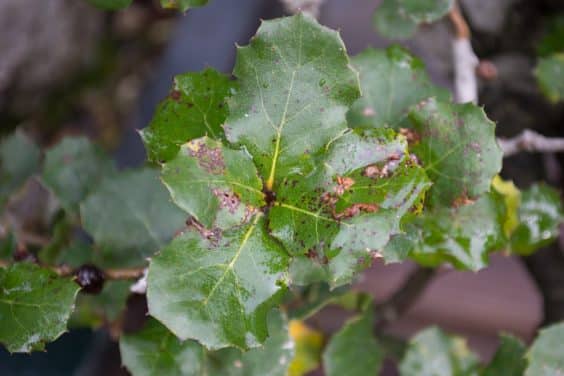
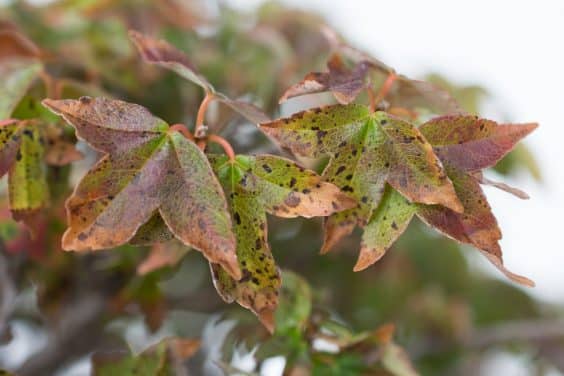
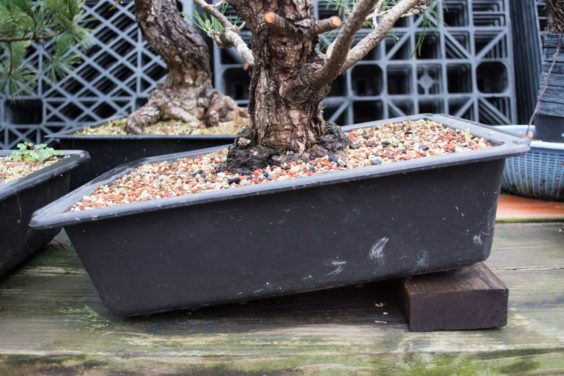
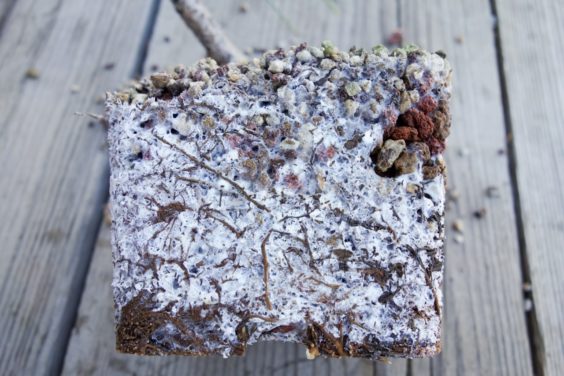
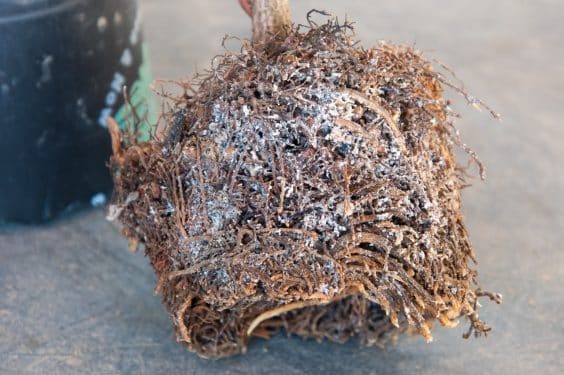
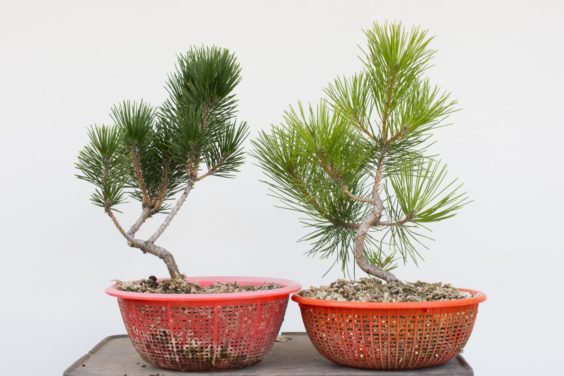
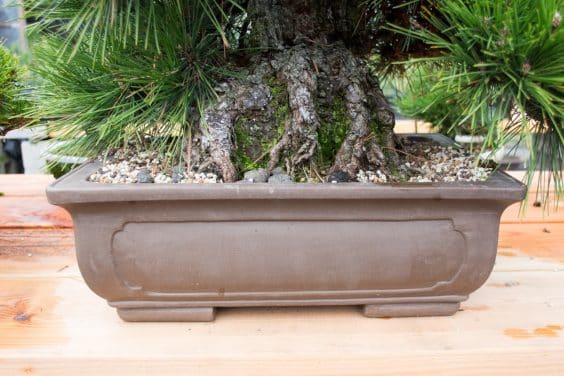
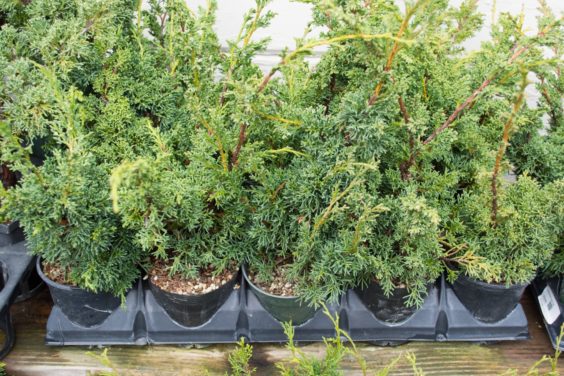
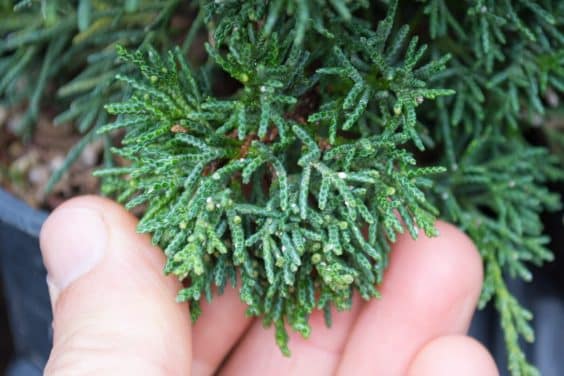
Matthew Walker says
Yellow foliage on JBP is cause by over watering or under watering? Repot and removing old soil helped in the past, any other advice for yellowing JBP?
Jonas Dupuich says
Too much water on pine often causes the lower portion of the needles to yellow rather than the whole needle. Root aphids, poor soil and poor nutrition can also cause yellowing, as can cold temps in winter (this has already started in my yard). Ensuring good soil (repotting if need be, as you note), good water habits and good nutrition are all good ways to deal with yellow pines.
Davide86 says
It’s true that cold or very cold temperature can yellowing a little bit needles of JBP?
I live in northern Italy under Alps and it’s the second year that i have in my collections two JBP in training and I’ve noticed that but in the spring all is ok and candles start vigorously.
Congratulations for your fantastic blog!
Jonas Dupuich says
Hi Davide – yes, black and red pines commonly turn yellow in winter and green up again in spring. White pines and shimpaku turn brown for winter. Thanks for the note!
Davide86 says
I’ts right, also JRP i forgot to mention. I have also some Cryptomeria and an Oriental Thuja/Platycladus that turn dark orange/brown. I’ve noticed also Pinus Sylvestris yellowing a little bit but not like JBP and JRP. Thanks for the answer!
Rechad Golamaully says
Would you please advise me how to counter act against leaf miners.
Jonas Dupuich says
Systemic pesticides are best for leaf miners as the shell of the leaves can protect miners from contact sprays.